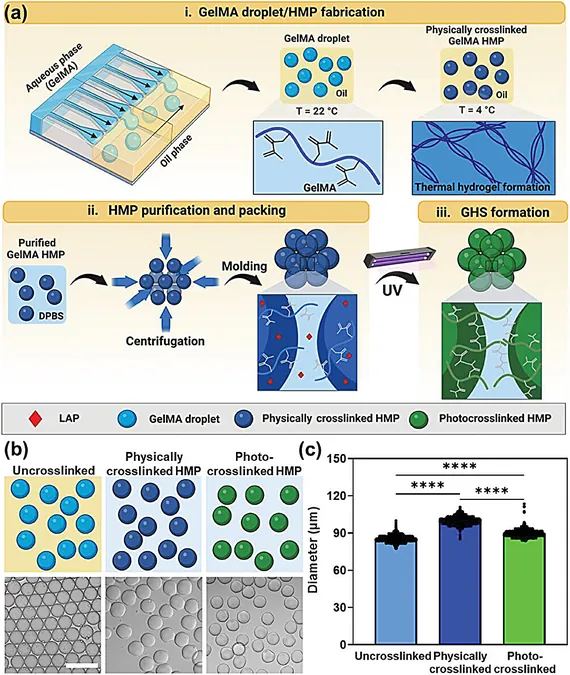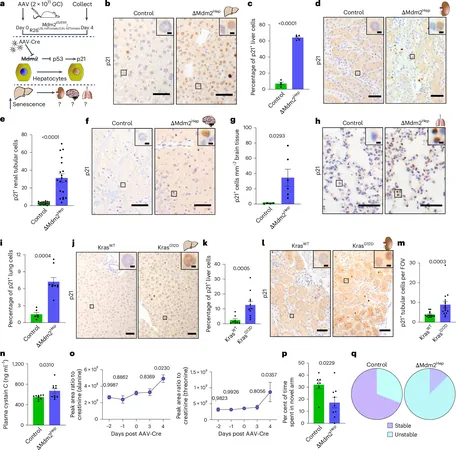
Revolutionary Squishy Microgels Set to Transform Cell Behavior in Biomedical Treatments!
2024-11-13
Author: Ming
Introduction
Scientists from Penn State have unveiled a groundbreaking biotechnological strategy utilizing squishy, water-absorbing microgels that has the potential to revolutionize medical treatments, including wound healing, cancer therapy, and even organ regeneration. Their pioneering research, recently published in Advanced Healthcare Materials, highlights how these materials can influence cell behavior to create personalized medical solutions.
Innovative Microgel Technology
The innovation centers around gelatin methacryloyl (GelMA) granular hydrogel scaffolds, composed of hydrogel microparticles, or microgels, that can pack tightly or loosely to confine and direct cell movements. Lead researcher Sheikhi notes, "By adjusting the packing density of microgels, we can significantly control how cells behave, creating a custom microenvironment that directs their actions in unprecedented ways."
Implications for Biomedical Engineering
Historically, hydrogel scaffolds aimed at facilitating blood vessel formation and aiding in reconstructive surgeries have fallen short when it comes to manipulating internal structures. However, this team's ability to modify the packing density opens exciting new avenues in biomedical engineering. Less dense packing forms larger pores, which fosters cell migration and proliferation, while tightly packed scaffolds create narrower pores, restricting cell movement. This innovative control is especially advantageous for modeling solid tissues and cancer environments, potentially leading to breakthroughs in preventing metastasis.
Custom Scaffolds for Patient-Specific Healing
Imagine a world where customized scaffolds are designed specifically for individual patient needs. "We envision a future of personalized scaffolds tailored for unique recovery environments that directly influence healing," Sheikhi asserts. This customization not only promises better outcomes for patients but could also minimize recovery times and the risk of complications, paving the way for a more efficient healthcare system.
Enhancing Disease Study and Treatment
Furthermore, these hydrogel scaffolds hold promise for enhancing the way diseases are studied and treated. The ability to create varied mechanical properties without local stiffness could lead to highly accurate models of human tissue, aiding in the understanding of disease progression, particularly for conditions like cancer. This innovation could streamline the testing process for new drugs, providing insights before they enter clinical trials.
Future Directions
The next steps for the research team include testing these microgel-based materials with human tissues and optimizing production methods to ensure consistent quality. Sheikhi emphasizes the importance of overcoming these hurdles to transition these capabilities from the lab environment to clinical applications.
Conclusion
As this research continues to evolve, it promises to redefine how we approach medical treatment, making it more personal, effective, and ultimately changing the future of healthcare. Stay tuned for updates on this revolutionary project that could soon lead to a new standard in patient care!






 Brasil (PT)
Brasil (PT)
 Canada (EN)
Canada (EN)
 Chile (ES)
Chile (ES)
 España (ES)
España (ES)
 France (FR)
France (FR)
 Hong Kong (EN)
Hong Kong (EN)
 Italia (IT)
Italia (IT)
 日本 (JA)
日本 (JA)
 Magyarország (HU)
Magyarország (HU)
 Norge (NO)
Norge (NO)
 Polska (PL)
Polska (PL)
 Schweiz (DE)
Schweiz (DE)
 Singapore (EN)
Singapore (EN)
 Sverige (SV)
Sverige (SV)
 Suomi (FI)
Suomi (FI)
 Türkiye (TR)
Türkiye (TR)